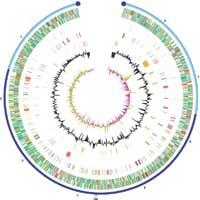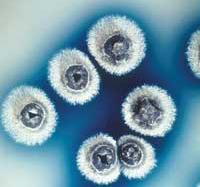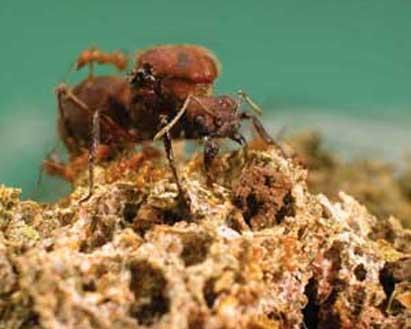Towards the generation of more efficient antibiotics
2002/05/09 Orobengoa, Olatz - Elhuyar Zientziaren Komunikazioa

Streptomyces coelicolor fungus and several family members produce two-thirds of all antibiotics currently used. These include antibiotic tetracyclines or erythromycin. They also produce substances that are used to treat cancer and weaken the immune system.
Genome has 8,667,507 base pairs and has more than one surprise inside. Apparently, the fungus has an incredible ability to adapt to very different environments. For example, scientists have discovered that it has the necessary gene to create the air vesicles. The finding of these vesicles was not expected in any way, as it is a characteristic of aquatic microorganisms and streptomyces are soil microorganisms. Experts believe that such discoveries can help decipher the life cycle of soil microorganisms.

In addition, given the increasing resistance of pathogenic bacteria to antibiotics, knowledge of the genome of Streptomyces fungi allows biotechnology experts to create more powerful tools against pathogens. By using the known antibiotic genes so far, its goal is to generate more efficient hybrid antibiotics.

Gai honi buruzko eduki gehiago
Elhuyarrek garatutako teknologia




